Spain and the Panasonic GF1 Revisited

I have been back from Spain for a little over a week now, and in that time I have shot a wedding and gotten back into the swing of things. Of course for the wedding, I used my usual Canon gear, and it was a great juxtaposition after having used just the GF1 for a week of traveling. I’m not sure that I have any grand conclusions to draw, but I did want to share some more images from Spain, and some of my thoughts about using the GF1 for various types of travel photography–landscapes, portraits, still life, etc.
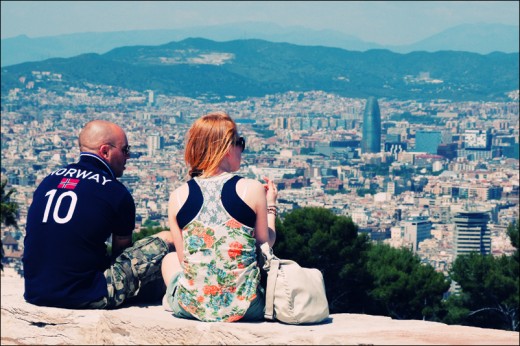
While in Spain, I did some rudimentary processing on my HP laptop using Adobe’s Lightroom–while I find Lightroom to be a great tool for downloading, organizing, and doing basic processing on photos, I still find that I haven’t completely migrated my workflow over to it, preferring to do final, careful tweaking in Photoshop instead, where I have more tools at hand. I found Photoshop especially helpful for the GF1 files, because a) it helped me get the best out of the GF1 files, and b) because GF1 files are somewhat delicate and temperamental–they don’t seem to have the same ability to be pushed and pulled before they start to show weird artifacting as do the larger sensored cameras. Good argument for getting things right in camera, but for some photos, like landscapes with fine detail, I don’t even think getting everything perfect in camera would totally fix the problem. I’m not sure if it’s a demosaicing thing, an analog-to-digital thing, the way Lightroom interprets the Panasonic raw data, the anti-aliasing filter over the sensor, or what, but the files just start to break down quicker than those from my 5D or 1DmkIII.
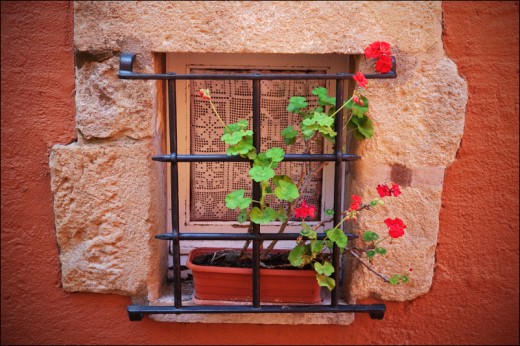
I hesitate to call that a flaw, however, as the GF1 images are really great and consistently exceed my expectations. After a 9+ hour day shooting wedding preparations and celebrations with two professional DSLRs and a bag full of glass, processing GF1 images, and remembering how unencumbered I was while creating them, was welcome. Still, there are things the GF1 cannot do–it can’t deliver amazing image quality at ISO 3200 and f/1.4. It can’t track fast action (though I have used it to shoot action), and it’s generally just not as flexible. But to anyone who is considering a camera like the GF1, these things will be obvious. For its intended purposes, it is fast enough, and the image quality is better–sometimes much better–than good enough.
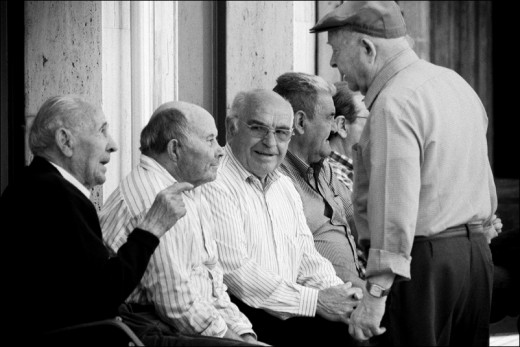
Shooting with the GF1 presents the photographer with a number of philosophical questions. Generally, as a photographer gains skill and knowledge about photography, he acquires better, faster lenses, more capable bodies, and more sophisticated software. There is a constant process of upgrading, until he reaches the point where everything he has is top-shelf. And with nowhere else to go but within, the good photographer will then be able to fully express his vision with the superlative tools at hand. But then that persistent question arises, do I need all this? The question that is always answered with the age-old and oft-repeated adage: “it’s not the camera, it’s the photographer,” the suggestion that the equipment is irrelevant–or vastly inferior–to the vision of the photographer. And the reason that sentiment comes up so often is because it is largely true, but good equipment can sometimes make an artists’ vision transcendental. But “good equipment” is sort of a moving target–is a 1DmkIII with a 70-200 f/2.8L (~8lbs. of camera and lens) really the best tool for documenting your tapas in a small village on the Costa Brava while enjoying the company of your family? Probably not. On the other hand, if you are shooting a wedding professionally, and getting the image, whatever the conditions, matters most, then the GF1 may disappoint.
 So then maybe it’s a “horses for courses” sort of thing–different tools for different applications. Different brushes for watercolor, oil, or acrylic, different hammers for roofing, framing, or cabinetry. You see where I am going here. The thing about the GF1, though (and likely other mirrorless cameras that I haven’t used), is that it makes me consider totally rethinking my approach to photography, and totally revamping how I shoot weddings or other paid work. It was such a pleasure to use, that it made me want to completely abandon the DSLRs and figure out a way to shoot weddings or other work with something as small as the GF1. One consideration was the Leica M9, which would certainly work, but would dramatically change the way I cover events like weddings. Where the 1DmkIII is state of the art in terms of low noise, high ISO images, speed, autofocus, and overall ability, the Leica is manual everything–where the 1DmkIII allows spontaneity, the Leica is deliberate, slow, studied. Of course you can slow down with the Canon and learn how to speed up the Leica, but the fact remains that they are very different tools, and would likely make a noticeable impact on one’s photography.
So then maybe it’s a “horses for courses” sort of thing–different tools for different applications. Different brushes for watercolor, oil, or acrylic, different hammers for roofing, framing, or cabinetry. You see where I am going here. The thing about the GF1, though (and likely other mirrorless cameras that I haven’t used), is that it makes me consider totally rethinking my approach to photography, and totally revamping how I shoot weddings or other paid work. It was such a pleasure to use, that it made me want to completely abandon the DSLRs and figure out a way to shoot weddings or other work with something as small as the GF1. One consideration was the Leica M9, which would certainly work, but would dramatically change the way I cover events like weddings. Where the 1DmkIII is state of the art in terms of low noise, high ISO images, speed, autofocus, and overall ability, the Leica is manual everything–where the 1DmkIII allows spontaneity, the Leica is deliberate, slow, studied. Of course you can slow down with the Canon and learn how to speed up the Leica, but the fact remains that they are very different tools, and would likely make a noticeable impact on one’s photography.
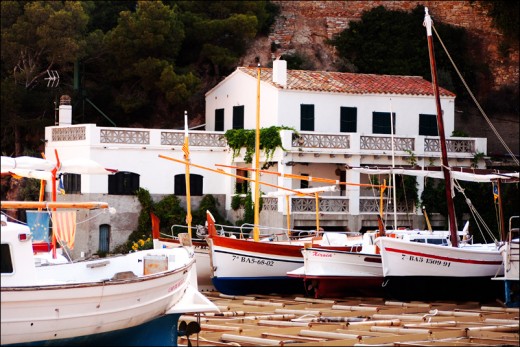
In the end, for me, it is about all the various variables and how a camera brings them together. It’s about how I interface with the camera–does it work with me, or against me. The GF1 for me represents the pleasure of experiential photography–it is having something along with you to document moments spontaneously as they present themselves. It is about lightweight, of course, and about a certain lightness generally–it is discreet, inconspicuous, and encourages one to experiment. The Canons and the Panasonic overlap in use, of course–depending on my mood, I’m as likely to take the 5D and a 35mm lens with me as I am to take the GF1 and 20mm–but whenever I am out with the GF1, I feel challenged to make compelling images, to experiment, to develop and explore different modes of expression. For me it functions sort of as a pencil or charcoal–I use it to sketch, to explore with broad strokes a certain theme or look or style. Sometimes the sketch is enough in and of itself. Other times, though, I will come back to that theme with more appropriate tools and try to take it further.
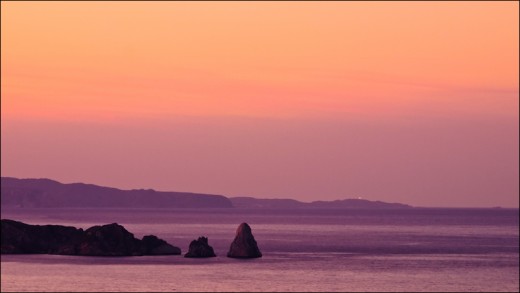
The only great example of this that I can think of is with something like the image above, of Les Illes Medes along la Costa Brava in Spain. I shot this with the GF1 and a 45-200mm lens, on a Gorillapod perched on the ceramic tile roof of our villa in Begur. If that roof were to encounter any issues, you can Click for Details on how to address it. The lens had image stabilization, the Gorillapod was reasonably stable, the image was taken at ISO 100, and the lens was stopped down. Still, there is noise and the resolution isn’t great. I’ve captured a moment, and it’s lovely and serviceable, but I would never print this image large as its flaws would show. This image is a good example of a “sketch” where I could experiment with different compositions, and then come back with the 5D and make a more technically superior image.
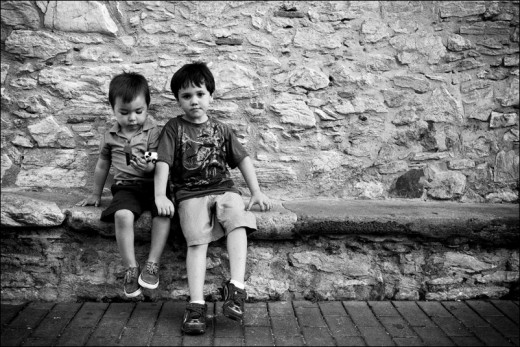
For the vast majority of what and how I shoot, though, none of what I just mentioned matters. This image of my son and nephew would be equally compelling and cute whatever camera it was taken with, cell phone included. That’s where the “best tool” or “right equipment” comes into play. I could have taken this with the 1DmkIII, but would I have hauled it to and used it in a busy town square where we met to have afternoon drinks? Would the kids have sat and allowed this candid moment, or would they have gone all self-conscious when they saw the hulk of professional camera? It’s not necessarily important to answer the questions, but to consider them.
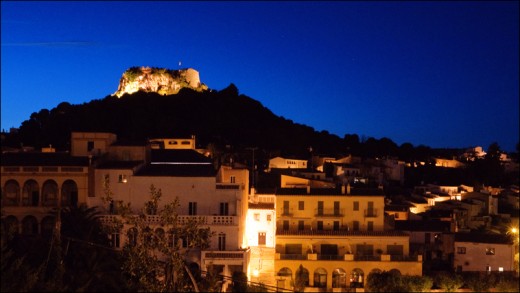
So, what does it all mean? First and foremost, the best camera is the one you have with you. Period. Second, the GF1 is a fabulous tool that is making me fundamentally reconsider my entire approach to making photographs. Third, the best camera is the one that you are most comfortable using–the one that gives you joy, that works harmoniously with you, gets out of your way, allows you to realize your vision. For me, there is no one camera that works for all situations, but I have found in three that generally symbiotic relationship that allows the technical to fall away and allow me to focus on the moment.
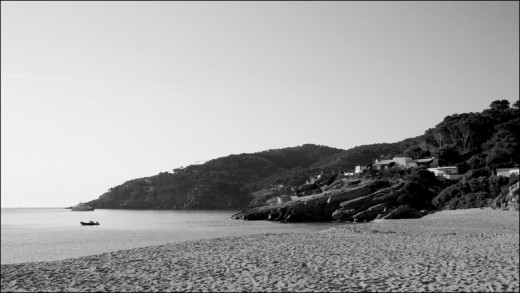
As far as any technical conclusions go, I can tell you this about the GF1:

- It has limited dynamic range–shooting in RAW gives you a bit more headroom, but in high contrast situations, you’ll have to give up some highlights or some shadows, unless you use filters.
- It excels at street shooting. Because it has good face-detection autofocus–and good autofocus generally–and a large LCD in place of a viewfinder, it is a great tool for shooting from the hip and on the fly. Cartier-Bresson had to use small apertures and zone focus to get his subjects in focus; with the GF1 you can aim generally and let the AF do the work, even at wide apertures.
- It is nearly weightless, esp. with a lens like the 20mm f/1.7. It is not quite pocketable, but it works great slung over the shoulder all day.
- It is not ideal for landscapes–as mentioned, the smaller sensor shows noise more readily. Still, it resolves detail well (especially with a good lens), and is probably “good enough” for someone like me who primarily photographs people.
- Video is handy, even for someone like me who never thinks they’ll use it. I was shooting stills of a street performance in the Barri Gotic in Barcelona when I realized I could shoot some video as well, so that viewers could experience the sounds as well as the sights.
- There are some UI niggles–I found myself occasionally changing the white balance by accident from bumping the button on the back, and other buttons around your thumb are easy to press if you’re not careful.
- I went in thinking I’d shoot at ISO 800 tops, from previous experience looking at files. I ended up shooting many images at ISO 1600 that I am very pleased with. 3200 still looks terrible to my eye.
- The 45-200mm lens is unexceptional. I was excited to have a long telephoto on this trip, and it got the job done, but is weakest at its longer focal lengths.
Overall it was a great camera to use while in Spain, especially considering that we were traveling with a two year old and every trip I challenge myself to pack smaller and lighter. Excepting dedicated, purpose-driven photographic excursions (like the trip to Iceland I am planning for the future), the GF1 will be my mainstay for travel photography, and even for the serious stuff will serve as an extremely competent backup.
If you’ve stuck with me this long, thanks for reading! I hope it was informative if not entirely concise and focused!
